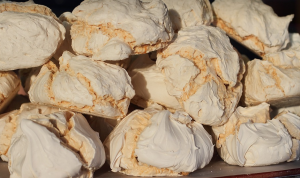
What Makes These Salts Different?
Let’s dive into the world of salts, specifically two popular choices – Epsom salt and Himalayan pink salt. These are more than just table-top minerals; they’re packed with potential health benefits and unique properties.
First up, we have Epsom salt, also known as magnesium sulfate. It’s a highly concentrated source of magnesium and naturally derived from the earth’s crust.
Epsom Salt: The Magnesium Maestro
Epsom salt is renowned for its ability to promote muscle relaxation and may help reduce pain. This comes down to its impact on magnesium levels in our bodies, an essential mineral that plays a crucial role in over 300 bodily functions. When you take Epsom salt baths, it helps your body absorb this magnesium more effectively.
Beyond muscle relief, Epsom salt is also believed to contribute to improved sleep quality and even help with headaches, particularly those related to tension. However, remember that scientific research on these claims is still ongoing.
Himalayan Pink Salt: A Flavorful Mineral Marvel
Now, let’s turn our attention towards Himalayan pink salt – a treasure from the foothills of the Himalayas. It’s not just aesthetically appealing with its vibrant hues; it boasts a distinct taste that elevates any dish.
This type of salt is rich in 84 minerals found naturally in the earth, including potassium, calcium, and magnesium. These minerals contribute to its unique flavor profile and also offer potential health benefits when consumed regularly.
Himalayan pink salt has been enjoyed for centuries across cultures for its culinary versatility and perceived ability to enhance overall well-being. Its popularity stems from the belief that consuming it can boost energy levels, promote digestion, and even alleviate respiratory issues.
Epsom Salt: The Relaxing Ritual
One of the most popular ways people use Epsom salt is in baths. Adding a cup or two to warm bath water creates a soothing experience that promotes relaxation. It’s believed that the mineral magnesium helps reduce muscle tension and ease aches, leaving you feeling refreshed and rejuvenated.
For those seeking relief from tired muscles after workouts or long days on your feet, Epsom salt baths offer an excellent remedy. It’s also a popular choice for individuals with chronic pain conditions who are looking for a natural approach to manage their discomfort.
Himalayan Pink Salt: A Culinary Symphony
Himalayan pink salt is not just for the bath; it’s a star ingredient in many culinary masterpieces as well! Its unique taste and rich mineral profile offer an authentic flavor dimension that elevates dishes.
From adding a touch of Himalayan salt to your favorite soups, stews, or even just sprinkling some on your table for a pop of color, this salt adds depth and complexity to your culinary creations. It’s truly versatile.
A Word About Health Claims
While the potential benefits of both Epsom salt and Himalayan pink salt for health are being explored, it is important to remember that scientific research on these claims is still in its early stages.
It’s crucial to consult with your doctor before incorporating any new supplement or treatment into your routine, especially if you have any underlying health conditions.
The Bottom Line
Ultimately, the choice between Epsom salt and Himalayan pink salt comes down to personal preference. If you’re looking for a more relaxing experience after a long day, Epsom salts are a great option.
On the other hand, if you’re seeking a more flavorful addition to your cooking or want to explore the potential health benefits of consuming Himalayan pink salt, this versatile salt is an excellent choice.
Find Your Salt Match
Whether you choose Epsom salt for its calming properties or Himalayan pink salt for its culinary versatility and purported health benefits, embracing these natural ingredients can be a positive step towards your overall well-being


